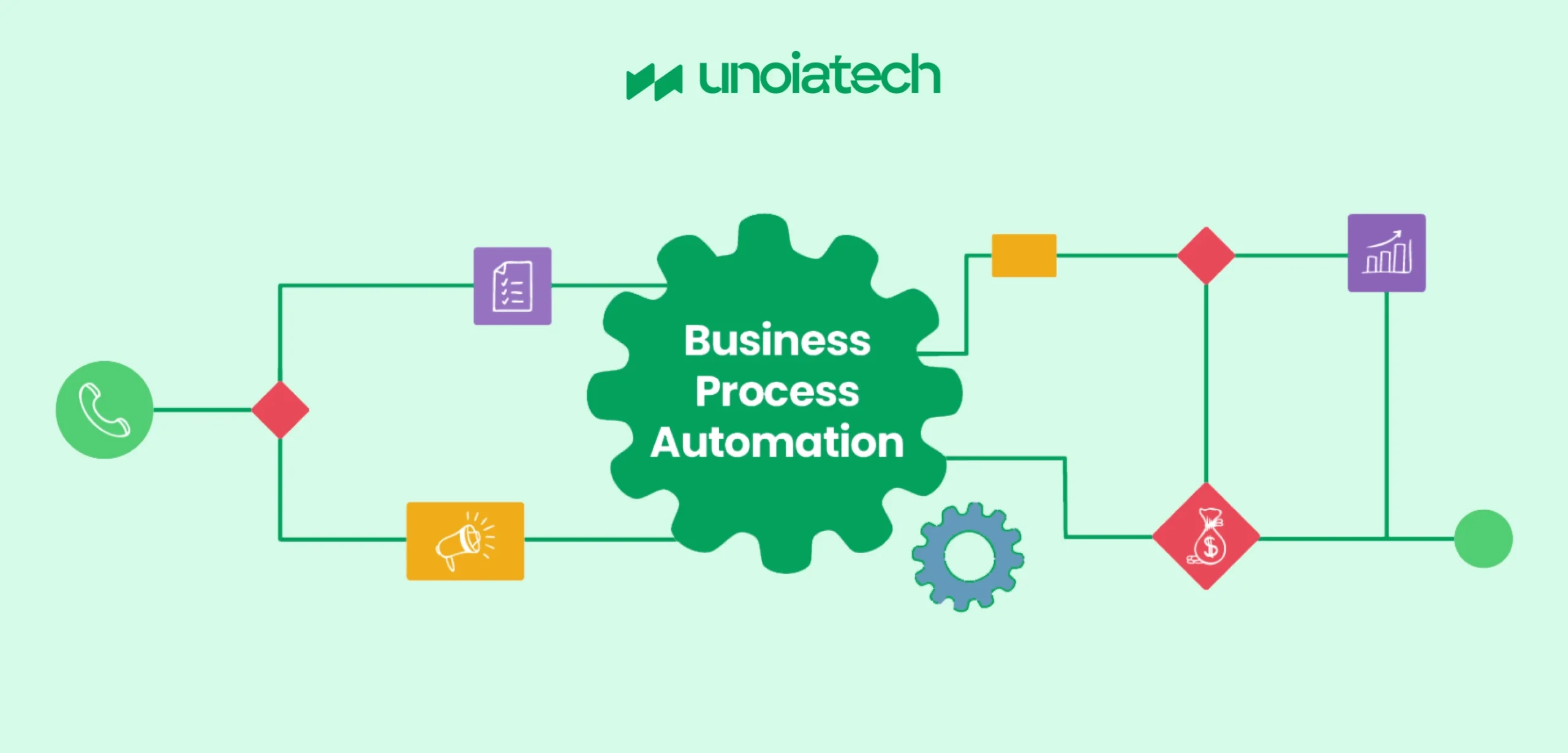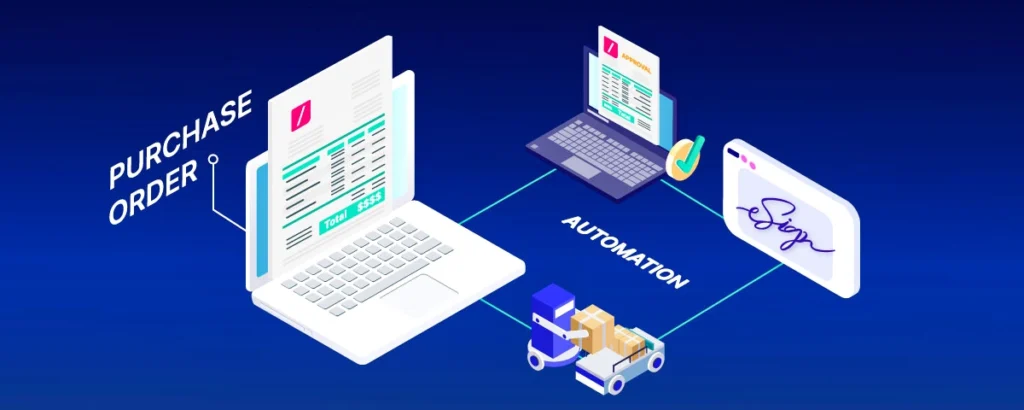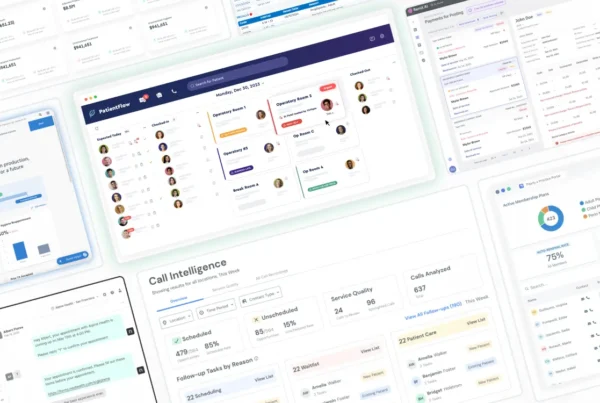
By 2025, it’s projected that 80 percent of organizations will have adopted Business Process Automation and intelligent automation. This makes Business Process Automation and workflow automation critical steps for CIOs aiming to fully embrace digital transformation and ensure their enterprises are future-ready.
Business Process Automation enhances efficiency, boosts productivity, and supports the adoption of new business models. However, more than 90 percent of automation projects fail, often due to technical challenges, high implementation costs, inadequate strategies, and resistance to change within the organization.
The best way to begin is by understanding Business Process Automation and how to implement it effectively for success.
What is Process Automation?
Process automation involves using technology to automate repetitive and manual tasks within business operations. This includes tools such as Robotic Process Automation (RPA), Intelligent Document Processing (IDP), workflow orchestration, and Artificial Intelligence (AI). These technologies streamline operations by automating routine tasks, thus improving efficiency and accuracy.
What is Business Process Automation (BPA)?
Business Process Automation (BPA) refers to the use of technology to streamline and automate organizational processes. The goal of BPA is to enhance operational efficiency by converting traditionally manual procedures into automated workflows. This approach aims to reduce errors, standardize processes, and allow employees to focus on more strategic tasks, ultimately boosting productivity and reducing operational costs.
BPA should be distinguished from Business Process Management (BPM). While BPA focuses specifically on automating routine tasks, BPM encompasses a broader scope, involving the management and optimization of complex, organization-wide processes using various methodologies.
Examples of Business Process Automation:
Business Process Automation (BPA) can be applied to various organizational functions, including Employee Onboarding, Purchase Orders, Customer Service, HR Processes, Marketing and Sales, Accounting and Finance, and Data Management.
To better understand business process automation, consider the following use case:
1. Employee Onboarding: Automating the employee onboarding process ensures tasks like form completion, scheduling induction sessions, and setting up bank accounts happen seamlessly. Without Business Process Automation, the process can become disorganized, leading to excessive paperwork, overlooked tasks, and reduced productivity.
– Excessive paperwork
– Overlooked tasks
– Employee dissatisfaction
– Reduced productivity
![]()
Applying business process automation to employee onboarding streamlines each step, ensures tasks are completed efficiently, keeps relevant employees informed, and provides clear visibility into the process’s status.
2. Purchase Orders
Manual purchase order processes can face delays and errors. Implementing Business Process Automation enhances accountability and transparency, ensuring accurate data recording and speeding up the approval process.
Without automation, several issues may arise:
– Delayed approval of purchase orders
– Reduced productivity
– Incomplete records
– Errors in the purchase order
– Mistakes during the delivery of supplies

Implementing a business process automation solution can enhance accountability and transparency, ensuring accurate data recording accessible to all relevant stakeholders. It also consolidates all process-related communication within the workflow, streamlining execution and speeding up the overall process.
Why Should You Automate Business Processes?
1. Stepping Stone to Digital Transformation
Business Process Automation is a foundational step toward digital transformation. Organizations can start by automating clearly defined processes and progressively move towards a culture of continuous improvement.
2. Enhance Clarity
Automation demands clarity in the processes involved, including tasks and responsible personnel. This clarity is essential for designing and automating effective workflows, and process mapping serves as a valuable training resource.
3. Streamline Processes
Automation systems lead to more streamlined operations by improving accountability, providing customizable notifications, and offering valuable insights, reducing wasteful activities and focusing on tasks that add significant value.
4. Maintain Compliance Records
Business Process Automation keeps detailed records of each process, which is crucial during audits to demonstrate compliance.
5. Standardize Operations
Automated processes ensure consistent outcomes, helping establish reliability and potentially expanding your customer base by showcasing consistent quality.
6. Boost Customer Satisfaction
Operational excellence through Business Process Automation enhances customer satisfaction. Meeting promised standards consistently improves customer preference and loyalty, distinguishing your organization in a competitive market.
Benefits of Using Business Process Automation Tools
Implementing business process automation tools offers several advantages:
1. Enhanced Productivity
Business Process Automation boosts productivity by providing centralized access to data through cloud-based systems, making it accessible from any device.
2. Increased Transparency
Automated processes offer greater visibility. You can monitor and track ongoing operations, enhancing accountability and transparency
3. Error Monitoring and Correction
With real-time monitoring, Business Process Automation helps identify and rectify errors quickly. Performance reports provide insights that help prevent recurring issues.
4. Faster Turnaround and Cost Reduction
Over time, Business Process Automation leads to faster processing times and cost savings by reducing manual tasks.
5. Improved Workforce Allocation
Automation handles repetitive tasks, allowing employees to focus on roles requiring human skills and judgment.
6. Continuous Efficiency Improvement
Business Process Automation systems are designed for ongoing process enhancement, continuously boosting efficiency as your business grows.
What Business Processes Should You Automate?
Business Process Automation is versatile and can be applied to various functions. Key indicators that a process might benefit from automation include high task volumes, multiple personnel involvement, time-sensitive nature, and compliance needs. Commonly automated processes include:
- High Task Volume: Processes involving large quantities of tasks.
- Multiple Personnel Involvement: Tasks that require several people to complete.
- Time-Sensitive Nature: Activities that need to be completed within specific timeframes.
- Impact on Other Systems: Processes that significantly affect other functions or systems.
- Compliance Needs: Processes that require detailed records for compliance and auditing.
Processes meeting these criteria are strong candidates for automation.
Here are some commonly automated business processes:
- Email and push notifications
- Helpdesk support
- Creating customer case studies
- Data aggregation and migration
- Backup and restoration
- Employee leave requests
- Procurement
- Call center operations
- Sales orders
- Time and attendance tracking
- Payroll
- Invoicing
- Collections
- Product launches
- Lead nurturing
Benefits of Using Business Process Automation Tools
Automating business processes can yield several significant benefits:
- Increased ProductivityAutomation enhances productivity by centralizing data in cloud-based systems, allowing you to access information from any device, anywhere, at any time.
- Improved TransparencyAutomated processes offer greater visibility, allowing you to track and monitor tasks in real-time. This leads to better accountability and operational transparency.
- Error Monitoring and CorrectionWith real-time monitoring, you can quickly identify and address errors as they occur. Performance reports provide valuable insights, helping you prevent recurring issues.
- Faster Turnaround and Cost SavingsOver time, automation reduces manual intervention, leading to quicker processing times and cost reductions.
- Optimized Workforce AllocationBy automating routine tasks, you free up employees to focus on roles that require human skills and decision-making.
- Enhanced EfficiencyAutomation supports continuous improvement, allowing efficiency levels to rise as your business grows and adapts.
Features of Business Process Automation
- Workflow ManagementOrganizes and streamlines tasks for efficient execution.
- Task SchedulingAutomates task scheduling based on predefined rules.
- Process MonitoringProvides real-time insights into the progress of ongoing processes.
- IntegrationConnects seamlessly with existing software to unify data and processes.
- Reporting and AnalyticsOffers data-driven insights for better decision-making and process optimization.
- User Roles and PermissionsEnsures secure access control and task delegation within the system.
- Alerts and NotificationsDelivers timely updates to stakeholders about progress or issues.
- Error HandlingDetects and resolves issues to ensure smooth process execution.
- Customizable TemplatesIncludes pre-built templates that can be tailored to specific business needs.
- Version ControlManages and tracks changes to processes, ensuring consistency and auditability.
Best Practices for Business Process Automation
Successful automation requires a methodical approach:
- Understand the ProcessClearly identify the tasks involved, the responsible parties, and the timing of each task.
- Set Clear GoalsDefine specific objectives for automation to minimize the need for adjustments later.
- Measure Results GraduallyExpect gradual improvements rather than immediate results, and assess outcomes in phases.
- Invest in TrainingAllocate sufficient time and resources for employee training and account for an adjustment period.
- Adopt a Long-Term PerspectiveFocus on long-term gains and return on investment.
- Utilize Existing SolutionsLeverage pre-built solutions where applicable to streamline the automation process.
Features of Business Process Automation
- Workflow ManagementOrganizes and streamlines tasks for efficient execution.
- Task SchedulingAutomates task scheduling based on predefined rules.
- Process MonitoringProvides real-time insights into the progress of ongoing processes.
- IntegrationConnects seamlessly with existing software to unify data and processes.
- Reporting and AnalyticsOffers data-driven insights for better decision-making and process optimization.
- User Roles and PermissionsEnsures secure access control and task delegation within the system.
- Alerts and NotificationsDelivers timely updates to stakeholders about progress or issues.
- Error HandlingDetects and resolves issues to ensure smooth process execution.
- Customizable TemplatesIncludes pre-built templates that can be tailored to specific business needs.
- Version ControlManages and tracks changes to processes, ensuring consistency and auditability.
Best Practices for Business Process Automation
Successful automation requires a methodical approach:
- Understand the ProcessClearly identify the tasks involved, the responsible parties, and the timing of each task.
- Set Clear GoalsDefine specific objectives for automation to minimize the need for adjustments later.
- Measure Results GraduallyExpect gradual improvements rather than immediate results, and assess outcomes in phases.
- Invest in TrainingAllocate sufficient time and resources for employee training and account for an adjustment period.
- Adopt a Long-Term PerspectiveFocus on long-term gains and return on investment.
- Utilize Existing SolutionsLeverage pre-built solutions where applicable to streamline the automation process.








